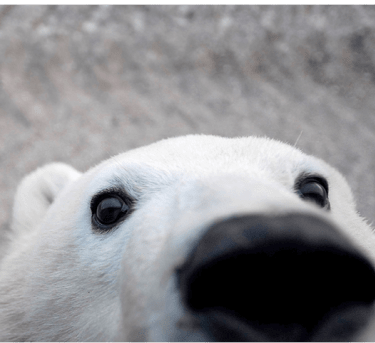Sea ice loss remains the greatest threat, but some human activities could have a collective impact on polar bears’ ability to rebound.
What are the biggest threats facing polar bear populations? Do those threats vary across the bears’ range? And do they interact with each other, the impacts of one exacerbating the effects of another?
A recent study sought to answer those very questions. It found that, while a loss of sea ice as a result of climate change is by far the biggest factor impacting polar bears’ future, other human activities – from hunting to modification of terrestrial habitat - also play a role. They conclude that addressing all of them in concert offers the greatest probability of preventing populations from declining over the coming decades.
Writing in the journal Ecosphere, a team of researchers led by Todd Atwood of the U.S. Geological Survey and Bruce Marcot of the U.S. Forest Service used scientific population models to examine impacts on polar bears in the four sea ice ecoregions: the Seasonal Sea Ice Ecoregion in central and eastern Arctic Canada and western Greenland; the Convergent Sea Ice Ecoregion, which covers eastern Greenland, the area north of the Canadian Arctic Archipelago, and the northern Beaufort Sea; the Divergent Sea Ice Ecoregion, which stretches from coastal Alaska and the Chukchi Sea all the way across the Polar Basin to the Russian Arctic, Svalbard, and the Barents Sea; and the Archipelago Sea Ice Ecoregion – which, as its name suggests, encompasses the islands and channels of the Canadian Arctic Archipelago.
With increased emissions, more significant population decline
The authors started with two emissions scenarios modeled by the Intergovernmental Panel on Climate Change (IPCC): one in which global CO2 emissions reach net-zero after 2050 and average end-of-century temperatures stabilize at 1.8 degrees C (3.2 degrees F) above pre-industrial levels; and one in which emissions continue unabated and temperatures increase by 4.4 degrees C (7.9 degrees F) by the end of the century.
They then assessed how those emissions scenarios would affect sea ice extent and the availability of prey species in the four ecoregions. They also factored in a number of other human activities, to see if they might exacerbate the impacts of warming and also to determine if addressing those other activities would to some extent mitigate effects of sea ice loss.
They found that, unsurprisingly, polar bear populations across the species’ range declined under both emissions scenarios, although some did so more than others.
Should emissions be brought somewhat under control and temperature increases restricted, the authors found that the average probability of populations undergoing significant declines by century’s end ranged from 50 percent in the Archipelago Sea Ice Ecoregion to 80 percent elsewhere. If emissions continue increasing unabated, the probability of end-century decline increases to 90 percent for the Divergent Sea Ice Ecoregion and more than 80 percent for the Archipelago Sea Ice Ecoregion, with the other two ecoregions between those two extremes.
Climate effects vary by location
That different populations should face varying probabilities of extreme decline is not a surprise. Because of a variety of factors, ranging from water depth to topography to the nature and direction of ocean currents, sea ice in some areas appears to be at greater risk of more rapid decrease than in other areas; the channels of the Canadian Arctic Archipelago are expected to have some of the last remaining extensive tracts of Arctic sea ice in a warming world.
Additionally, bears in some populations have shown behavioral responses to sea ice disappearing, which while unlikely to prevent their decline or disappearance might delay it.
Important to manage the negative effects of human activity
Interestingly, while the authors of the study found that individual additional stressors such as oil and gas exploration or shipping made little difference to bear populations under the projections, two broader issues may cause a greater impact on their decline.
One was hunting. The authors note that, because polar bear populations have low growth rates – and several subpopulations are quite small, in the range of several hundred individuals – they can be vulnerable to overhunting. They argue that increased population monitoring will be essential to ensure that future hunts are managed in such a way that they do not further impact populations already under stress from climate change.
Additionally, while individual stressors did not contribute significantly to the risk of population declines, their collective impact was greater when it adversely affected the quality of terrestrial environments where bears are spending more time ashore. Timing industrial activities to occur when bears are not in an area, and reducing the opportunities for negative interactions between polar bears on shore and human communities could prove essential over the coming decades as more polar bears are forced ashore because of declines in sea ice and associated at-sea prey.
There is, they conclude, no dispute that the loss of sea ice as a result of climate change is by far the biggest threat to polar bears throughout their range, and combining emissions reductions with other management efforts provides the best opportunity for polar bear populations to persist deep into the 21st century and beyond.
The authors honor the fine contributions and memory of coauthor Jeffrey F. Bromaghin (dec.).

















